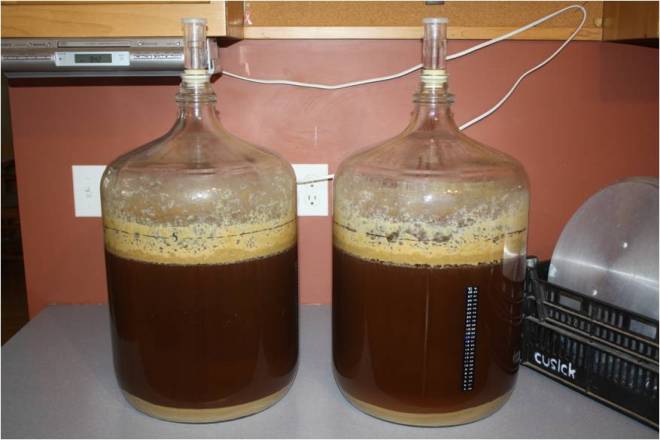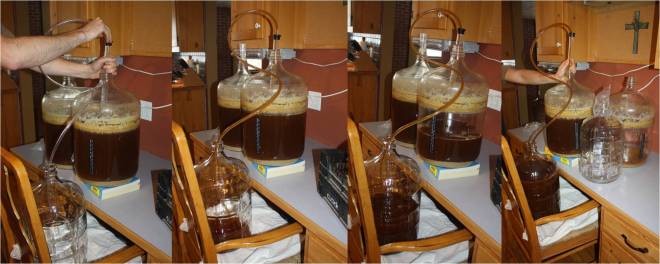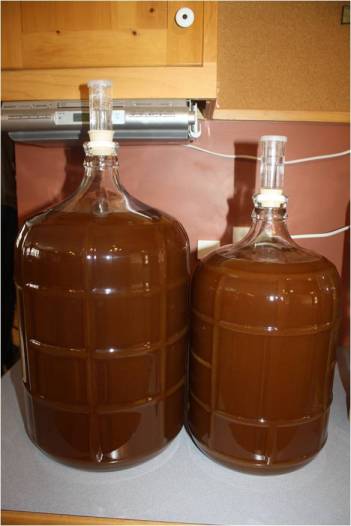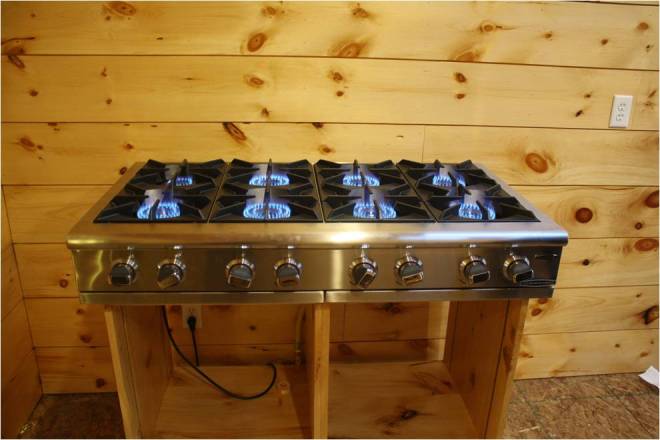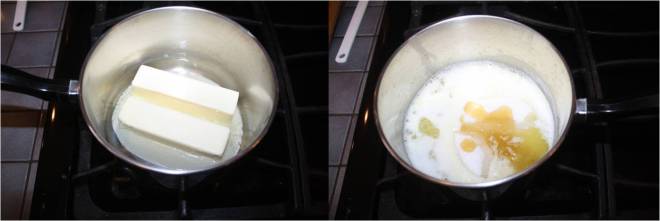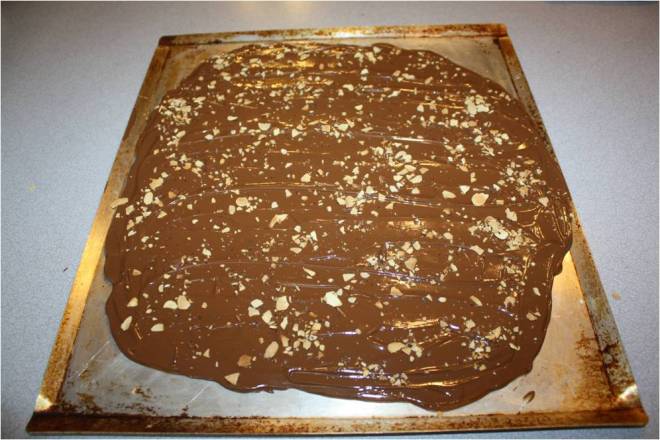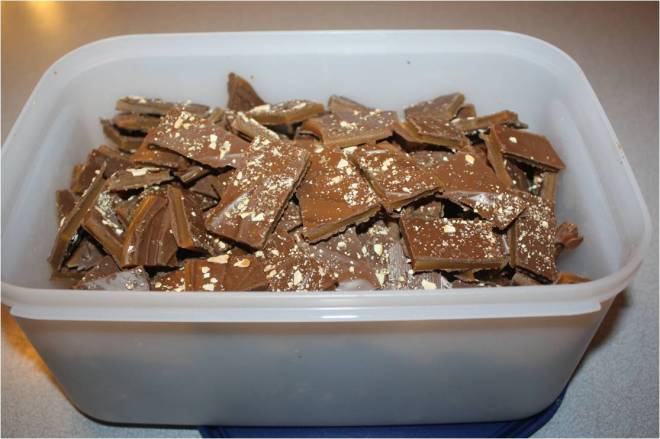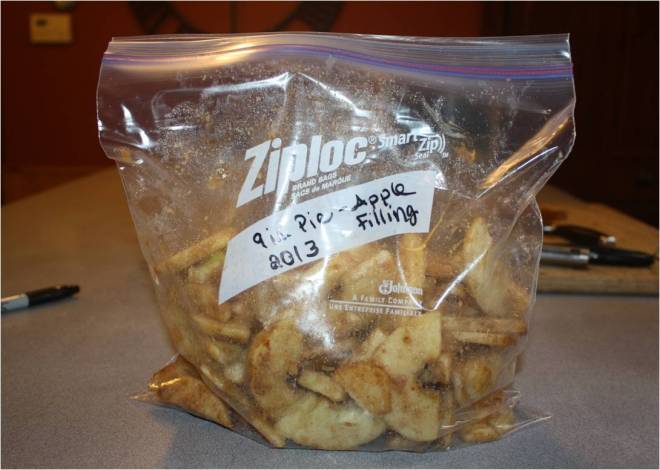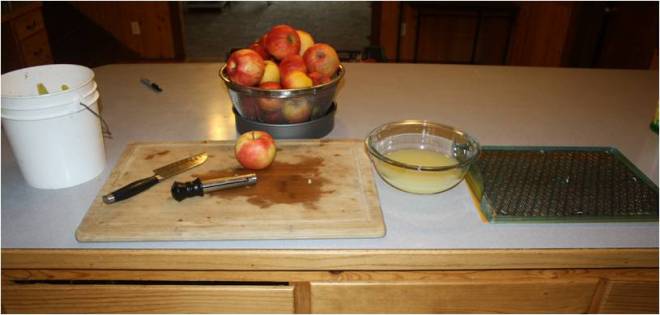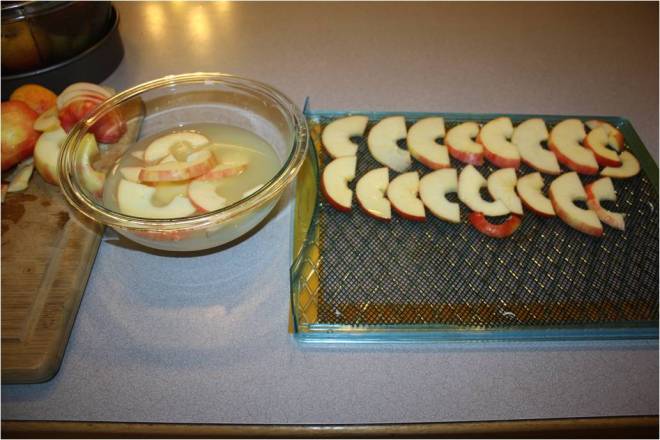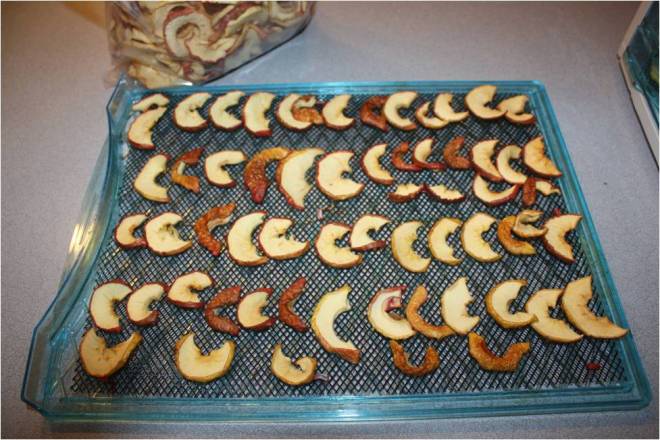This post is for my cousin Nick, he asked me to blog about home brewing a while ago, so I am going to try over the next few weeks to show the different steps and progression of this ale. This long post is of brew day, usually about a 6 hour process for us. I think brewing can be as simple or as complex as you like and your resulting beer will reflect this. There are also a lot of ways to achieve the same end product in home brewing, thus this post reflects our process based off our equipment, setup, and knowledge we have to date. On this 40 acre farm there is usually a lot brewing, both literally and figuratively… Let’s get to it!
Here is the recipe we designed on BeerSmith, a program I would highly recommend if you are into designing your own beer, which we are. This beer is based off English IPA style guidelines. The name is a direct result of Huz not knowing what he was creating when first designed and it stuck.
I Don’t Know Ale Recipe:
Type: All Grain
Batch Size: 8.00 gal
Boil Size: 10.49 gal
Boil Time: 60 min
End of Boil Vol: 9.36 gal
Final Bottling Vol: 7.25 gal
Fermentation: Ale, Two Stage
Date: 21 Nov 2013
Brewer: Huz & Wif
Equipment: 1 Huz & Wif All Grain Set-Up
Efficiency: 70.00 %
Est Mash Efficiency: 78.8 %
Taste Rating: 30.0
Ingredients:
| Amt |
Name |
Type |
# |
%/IBU |
| 12 lbs |
Pale Malt, Maris Otter (3.0 SRM) |
Grain |
1 |
75.0 % |
| 1 lbs |
Biscuit Malt (23.0 SRM) |
Grain |
2 |
6.3 % |
| 1 lbs |
Caramel/Crystal Malt – 60L (60.0 SRM) |
Grain |
3 |
6.3 % |
| 1 lbs |
Caramel/Crystal Malt -120L (120.0 SRM) |
Grain |
4 |
6.3 % |
| 1 lbs |
Melanoiden Malt (20.0 SRM) |
Grain |
5 |
6.3 % |
| 2.00 oz |
Cascade [5.50 %] – Boil 60.0 min |
Hop |
6 |
24.3 IBUs |
| 2.00 oz |
Cascade [5.50 %] – Boil 30.0 min |
Hop |
7 |
18.7 IBUs |
| 1.00 oz |
Cascade [5.50 %] – Boil 5.0 min |
Hop |
8 |
2.4 IBUs |
| 1.00 oz |
Citra [12.00 %] – Boil 5.0 min |
Hop |
9 |
5.3 IBUs |
| 1.0 pkg |
Burton Ale (White Labs #WLP023) [35.49 ml] |
Yeast |
10 |
– |
| 1.00 oz |
Citra [12.00 %] – Dry Hop 7.0 Days |
Hop |
11 |
0.0 IBUs |
Gravity, Alcohol Content and Color
Est Original Gravity: 1.052 SG
Est Final Gravity: 1.011 SG
Estimated Alcohol by Vol: 5.4 %
Bitterness: 50.6 IBUs
Est Color: 14.9 SRM
Measured Original Gravity: 1.051 SG
Measured Final Gravity: 1.010 SG
Actual Alcohol by Vol: 5.4 %
Calories: 168.6 kcal/12oz
Mash Profile
Mash Name: Single Infusion, Light Body
Sparge Water: 4.21 gal
Sparge Temperature: 168.0 F
Adjust Temp for Equipment: TRUE
Total Grain Weight: 16 lbs
Grain Temperature: 72.0 F
Tun Temperature: 72.0 F
Mash PH: 5.20
Mash Steps
| Name |
Description |
Step Temperature |
Step Time |
| Mash In |
Add 20.00 qt of water at 162.0 F |
148.0 F |
75 min |
| Mash Out |
Add 12.80 qt of water at 205.6 F |
168.0 F |
10 min |
Sparge: Fly sparge with 4.21 gal water at 168.0 F
Mash Notes: Simple single infusion mash for use with most modern well modified grains (about 95% of the time).
Our Gravity Fed Brew Setup:
1) Brewing water is heated in Hot Liquor Tank (HLT)
2) Mashing happens in Mash Lauter Tun (MLT)
3) Wort is drained into Boil Kettle (BK)
Brew day steps/pictures: The below shows how we go from grains, water, & yeast to delicious brews. (**Disclaimer: this will be a basic overview, if would like more of a detailed overview please send us a comment)
Dump your 16 pounds of cracked grain into your mash tun (MLT). The converted cooler helps to keep the water at a certain temperature, thus converting the starches in the crushed grains into sugars for fermentation. Then per the recipe above heat the water in your HLT to 162 degrees and add 20 quarts, by the time all 20 quarts have been added your new grain temperature should read 148 degrees. Stir the mash grain bed well and close lid. Let sit for 75 minutes. See this step below.

When the 75 minutes is up you have to add 12.8 more quarts of hot water at 205.6 degrees to bring the temperature of your mash up to 168 degrees. Then let this sit for 10 minutes. The idea here is you are extracting different starches. Once the 10 minutes is up, you fly sparge as you drain into your boil kettle. Meaning you will add 4.21 gallons of 168 degree water to the top of your mash as you mash out. It is important to keep both of these at the same speed. Fill your boil kettle up to 10.49 gallons. (10.5 is fine )

Then turn it on, once it comes to boil watch is very close as it will hot break. Meaning depending on the beer it will foam like crazy or even boil over if you do not watch it. Once all the proteins break down, the foaming will stop and you will have a rolling boil. To help keep the hot break tame: stir, spritz with a water bottle, or turn heat up and down. Once it has past its hot break keep at a rolling boil for 60 minutes as you need to boil out enough moisture to bring your beer down to 8.5 gallons.
There are 3 hops additions with this recipe, so at the start of the boil you add the first, then again at 30, then again at 5. Depending on the time you add the hops depends on the flavor bittering vs. aroma. The hops added at 60 minutes add bittering. The hops added at 30 add a bit of both, and the hops added the last 5 of boil add all aroma. Those are the hops notes you taste when you drink your beer. We put our hops in nylon paint bags to keep them contained. Here are some pictures of the boil.

See the foam? Hot break almost done.

Look closely and you can see the hop bag floating in the boil kettle with the wort.
Once this has boiled for 60 minutes, you need to cool it and cool it fast. These is where keeping things clean and sanitized is important. From now on clean is key to good beer. You use a wort chiller to chill quickly to 67/68 degrees. Chilling quickly helps prevent bacteria from growing. Once cooled to 68 degrees we split our 8.5 gallons into two 6.5 gallon sanitized carboys. Pictures below of chilling, what I forgot to take a picture of is the lid we put on top while chilling to keep away particles from air. Remember clean clean clean from here on out!

Once you add your cooled wort to your sanitized carboys you shake and aerate the wort before adding yeast. John Palmer explains the “why aerate” well here: Aeration is Good, Oxidation is Bad. Once a aerated, pitch yeast, and then airlock and do not shake again… we grow our yeast from one tube to save money but this is a whole different process. Comment me if you want more details. Below is aerating & pitching the yeast.

Shaking to aerate, remember to pop the top a time or two to let in air.

Splitting our yeast evenly into both carboys.
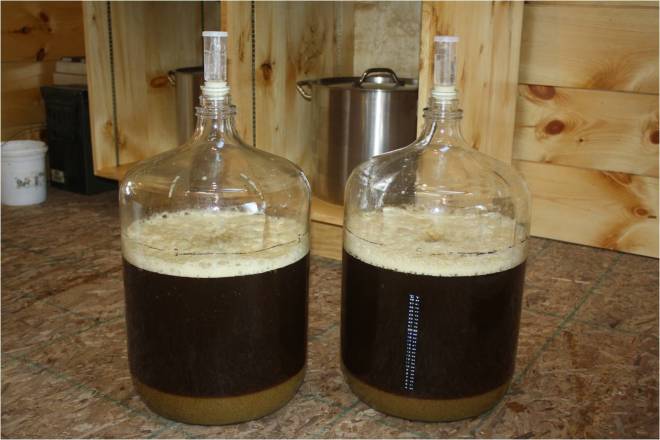
Finished Product: I Don’t Know Ale.
Last step to this post for now is just make sure over the next few days you watch this beer. Try to keep it around 67/68 degrees. When it ferments and the insides are going crazy that creates a heat, so to try to keep it in a cool room. We keep it in our upstairs bedroom during the winter as we do not heat that room much. So the cool room temp helps to keep the temperature more regulated. Then once the fermenting has slowed you can move it to a bit warmer room just trying to keep it in that temp range. Here is a picture of 1.5 days later, I say the yeast is working, isn’t it pretty?

Notes/Tips:
- Will try to keep you posted as this beer progresses, currently it is still sitting in the primary fermentor, and we hope to rack it over to the secondary fermentor this week… Stay turned.
- Also from here on out, remember clean clean clean, sanitize is key. We use star-san as our cleaner of choice.
- We treat the water when we brew all grain with some gypsum, calcium chloride, and lime. What we have learned is water can really affect your efficiency and your flavor. For more on this please comment and we can go into more detail.
- Just to reiterate this post is a basic overview of our brew process, if would like more of a detailed overview please send us a comment
Again this was a basic overview, hope you enjoyed and please let me know if you have any comments or questions! Enjoy ~ Megan
 Bottling beer is an exciting step for us in the brew process as we know we are close to tasting (which is my favorite step) … Depending on the style of beer they may age for months in the bottle or just need a bit of time to bottle carbonate. This style (English IPA) just needed time for carbonation. We are hoping in the near future to add a kegging system but we have been going back and forth on designs, I am for one idea Huz has another so until we decide we bottle… Let’s get to it!
Bottling beer is an exciting step for us in the brew process as we know we are close to tasting (which is my favorite step) … Depending on the style of beer they may age for months in the bottle or just need a bit of time to bottle carbonate. This style (English IPA) just needed time for carbonation. We are hoping in the near future to add a kegging system but we have been going back and forth on designs, I am for one idea Huz has another so until we decide we bottle… Let’s get to it!




